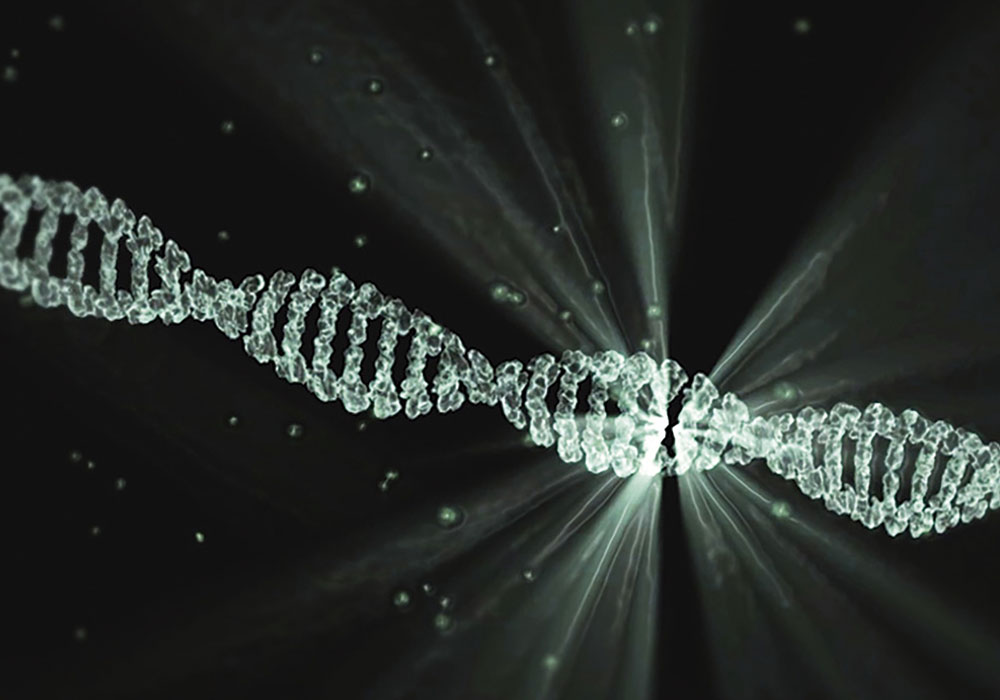Clustered regularly interspaced short palindromic repeats (CRISPR) is a commonly seen term for readers of science news and literature across a variety of industries. But reading the word often doesn’t automatically translate to understanding it and its implications. Here’s what oncology nurses need to know about CRISPR.
Nursing Primer on CRISPR
A name for both a method for editing DNA in genes and the genetic sequence itself, CRISPR has the potential to eliminate diseases, improve agriculture, prevent infections, and destroy cancer. The technology was even used as a test to detect the COVID-19 coronavirus.
Scientists discovered that some microbes such as bacteria naturally use a system to defend against invasion from viruses and other substances. The microbes capture and store snippets—also called CRISPRs—of the invader’s DNA to identify future attacks. If the same virus invades again, the snippets are converted to RNA, triggering Cas9 enzymes to inactivate the invader by cutting its DNA.
For gene editing, researchers create a guide RNA molecule to identify a specific gene sequence. When the RNA locates a targeted DNA sequence, it activates Cas9, which works as scissors to cut the DNA strand, either disabling the gene, inserting missing genetic sequences, or replacing sequences. See the How CRISPR Works sidebar for an illustration of the process.
Scientists have long sought to alter or repair DNA changes associated with disease development. CRISPR technology is faster and less expensive than previously explored methods of gene editing because researchers can special order only the RNA fragment and the remaining components are commercially available.
CRISPR’s Use in Cancer Treatments
In cancer research, CRISPR can detect and prioritize specific treatment targets such as DNA from cancer-causing viruses and RNA from cancer cells. CRISPR technology is also used to rapidly develop cell lines for testing cancer therapeutics. Most trials using CRISPR are modifying cell genomes in vitro.
For gynecological cancers, CRISPR’s knockout function is being used in studies of 12 target genes for cervical cancer and 19 genes for ovarian cancer. The knockout function inactivates the gene to promote apoptosis, increase sensitivity to radiation, and inhibit metastasis. A clinical trial for metastatic non-small cell lung cancer is evaluating the safety of using PD-1 knockout-engineered T cell treatment. Other trials are testing CRISPR-engineered CAR T cells in individuals with multiple myeloma and B cell cancers. See the CRISPR-Edited T Cells sidebar for a diagram of that process.
Potential Pitfalls
Scientists caution that to ensure that CRISPR is used efficiently and safely, safeguards need to be enacted. Cas9 and other similar enzymes have the potential to cut DNA at unplanned locations, an off-target effect that could cause unintentional health consequences. For example, a tumor suppressor gene could inadvertently be turned off. Scientists also worry that editing cells inside the human body could pass accidental changes to future generations by sperm or egg cells. Currently most CRISPR clinical trials involve ex vivo gene editing that occurs outside the body.
The Bottom Line for Oncology Nurses
As treatments developed with CRISPR move out of the laboratories and into human clinical trials, oncology nurses need to be diligent about astute clinical assessment and thorough patient monitoring. Although the technology holds promise in repairing defects leading to cancer growth and metastasis, be aware of the potential for off-target effects. Similar to the new side-effect profile we discovered with targeted therapies, unique adverse effects may be identified with CRISPR-developed therapeutics. Patient education, awareness, and reporting are crucial for nursing care.






